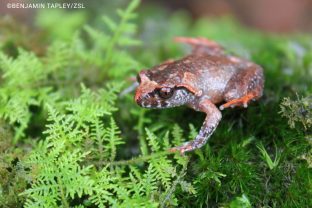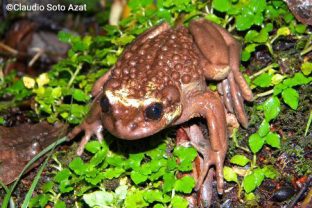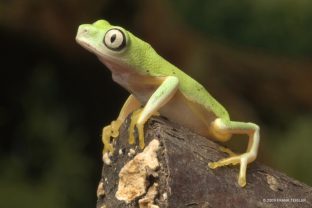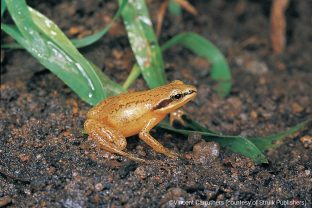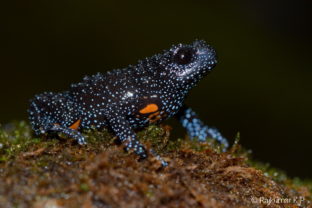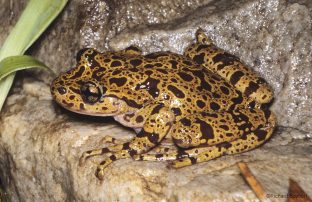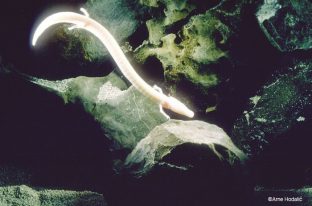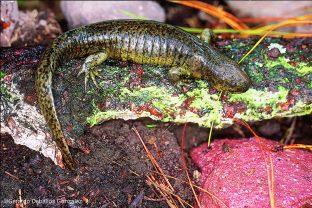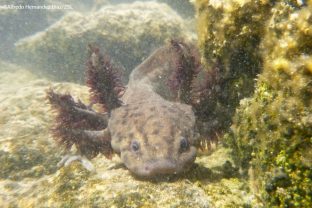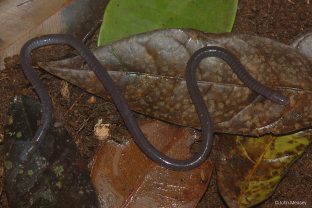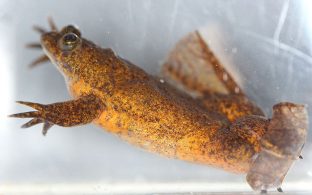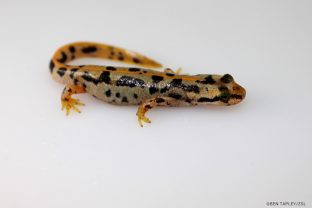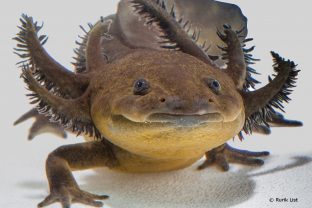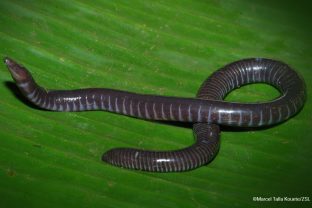TOP EDGE Amphibians
Botsford’s Leaf-litter Frog
Leptobrachella botsfordi
Botsford’s leaf-litter frog was only described by science in 2013.
Conservation Attention
Medium
Leptobrachella kecil
Leptobrachella kecil
Leptobrachella kecil occurs in an area of just 10km²!
Conservation Attention
Low
Bullock’s Mountains False Toad
Telmatobufo bullocki
Bullock’s false toad is a rare and elusive species, usually found under logs in temperate beech woodland.
Conservation Attention
Very Low
Alsco Long-fingered Frog
Cardioglossa alsco
The Alsco long-fingered frog is named after the company that funded the expedition that led to its formal discovery: American Linen Supply Company (ALSCO).
Conservation Attention
Very Low
Paulson’s Robber Frog
Eleutherodactylus paulsoni
The Critically Endangered Paulson’s robber frog is endemic to Haiti, where it is restricted to the Tiburon Peninsula.
Conservation Attention
Very Low
Lemur Leaf Frog
Agalychnis lemur
The lemur leaf frog is a frog that is found in Colombia, Costa Rica and Panama.
Conservation Attention
Good
Oedipina tomasi
Oedipina tomasi
Oedipina tomasi is only known from two specimens, therefore very little is known about the habitat and ecology of this species.
Conservation Attention
Low
Mistbelt Moss Frog
Anhydrophryne ngongoniensis
The mistbelt moss frog, also known as the mistbelt chirping frog, reaches lengths of just 2 cm. This may be the reason why this species was only discovered in 1993, alongside its faint call, making it difficult to detect.
Conservation Attention
Low
Galaxy Frog
Melanobatrachus indicus
This is an extremely rare species, the population is fragmented with a total size of less than 5,000 km².
Conservation Attention
Low
Hewitt’s Ghost Frog
Heleophryne hewitti
Hewitt’s ghost frog is an attractively patterned frog that lives in fast flowing mountain streams and rivers. The tadpoles of this species develop very slowly, taking up to two years to complete their metamorphosis into the adult form.
Conservation Attention
Low
Olm
Proteus anguinus
The olm is Europe’s only cave-dwelling vertebrate, and has numerous unique adaptations for an underground life. Incredibly, the olm can survive without food for up to a decade!
Conservation Attention
Low
Granular Salamander
Ambystoma granulosum
The granular salamander, unlike many of its close relatives, is a fully metamorphosing species of mole salamander. It therefore develops into an adult form, losing its larval characteristics such as gills and fins, and developing adult traits such as eyelids and functioning lungs.
Conservation Attention
Low
Taylor’s Salamander
Ambystoma taylori
Taylor’s salamander exhibits some incredible features, such as being able to live in salt waters with such high salinity that it would kill most other amphibian species!
Conservation Attention
Low
Sagalla Caecilian
Boulengerula niedeni
The Endangered Sagalla caecilian is found on Sagalla Hill, Kenya, with a total range which is equivalent to the area half the size of Manhattan Island.
Conservation Attention
Medium
Lake Oku clawed frog
Xenopus longipes
The Lake Oku clawed frog is a small amphibian reaching just 36mm in length. This diminutive species is one of only two frogs known to be ‘dodecaploid’, meaning they have a staggering 12 sets of chromosomes – humans have just two!
Conservation Attention
Good
Sardinian Brook Salamander
Euproctus platycephalus
The Sardinian brook salamander is endemic to Sardinia, Italy, and is often found living in cave systems.
Conservation Attention
Low
Lake Lerma Salamander
Ambystoma lermaense
The Lake Lerma salamander is a large species of lungless salamander, reaching almost a quarter of a metre long!
Conservation Attention
Low
Victoria caecilian
Herpele multiplicata
The Victoria caecilian is only known from one individual, collected in 1912, and it has not been seen since! This has led to fears that this species may have become extinct, and its taxonomic validity has also been put into question.
Conservation Attention
Very Low
